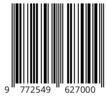Analisis Kontrastif pada Bahasa Indonesia dan Bahasa Jawa dalam Cerita Anak Terjemahan
Abstract
The purpose of this study is to describe the differences in affixation or affixation in Indonesian and Javanese. This research is a research of contrastive analysis. In this study, the object of the study is suffixes in Indonesian and Javanese. The data in this study was taken from translated children's stories published by the East Java Provincial Language Center. The cultural richness in East Java is reflected in children's stories that contain local wisdom and the values of the people of East Java. The data analysis is focused on the similarities and differences between the two languages. This study explains the similarities and differences between Javanese and Indonesian affixation in translated children's storybooks. This research was conducted using a qualitative method. The result of this study is the discovery of affixations that have similarities, namely (1) the affixes -ng, -n in Javanese and meng-, men-, mem- in the language Indonesian, (2) the affix di- in Javanese and Indonesian which is a passive verbal form that means to do something, as well as the affix di-na in Javanese and di-kan in Indonesian, (3) the affix -an in Javanese and Indonesian which functions to form a derivative noun, and (4) the affix -e and -ne in Javanese and its in Indonesian which means possession, The same goes for Sak-e and Se-nya. The difference between the affixes in Javanese and Indonesian can be seen in (1) the affixes -into Javanese and me- in Indonesian, (2) the affixes -em- and -kan, ne- and ber-, tak-i and ke-an ku.
Keywords
Full Text:
PDFReferences
Adiza, I., & Ogheneakpobor, E. (2024). A Contrastive Analysis of Plural Formation in English and ?kw?an?. NIU Journal of Humanities. https://doi.org/10.58709/niujhu.v9i1.1850.
Arifin, Z & Junaiyah, H.M. (2009). Morfologi: bentuk, makna dan fungsi. Grasindo.
Aronoff, M. (2008). In the Beginning was the Word. Language, 83, 803 - 830. https://doi.org/10.1353/LAN.2008.0042.
Blevins, J. (2006). Word-based morphology. Journal of Linguistics, 42, 531 - 573. https://doi.org/10.1017/S0022226706004191.
Calder, B., He, S., & Sternthal, B. (2023). Using theoretical frameworks in behavioral research. Journal of Business Research. https://doi.org/10.1016/j.jbusres.2023.113758.
Capelli, D. (2019). The Importance of The Transfer in Italian-Spanish Learning. Quaderni Di Linguistica E Studi Orientali, 5, 345–366.
Coulange, S., Kato, T., Rossato, S., & Masperi, M. (2024). Enhancing Language Learners’ Comprehensibility through Automated Analysis of Pause Positions and Syllable Prominence. Languages. https://doi.org/10.3390/languages9030078.
Darwanto. (2003). Klepon Werna Werni. Kemdikbud.
Drijkoningen, F. (1994). Affixation and Logical Form. Linguistics in The Netherlands, 11, 25-36. https://doi.org/10.1075/AVT.11.05DRI.
Elgobshawi, A. (2024). Conceptualization of Morphological Roots in Arabic and English: A Contrastive Analysis. World Journal of English Language. https://doi.org/10.5430/wjel.v14n5p436.
Engliana, E., Indrapratiwi, A., & Ransang, R. (2020). Readers’ Responses to The Reading of Translations of Children’s Story. DEIKSIS. https://doi.org/10.30998/deiksis.v12i02.5925.
Fitrie, Q., Ediwarman, E., Tisnasari, S., & Supena, A. (2023). Analisis Kontrastif Afiksasi Verba Bahasa Jawa Dialek Banten Dan Bahasa Indonesia Dalam Kanal Youtube Guyonan Pegandikan Periode 2021. Bahtera Indonesia; Jurnal Penelitian Bahasa Dan Sastra Indonesia, 8(2), 401–413.
Goethem, K. (2020). Affixation in Morphology. Oxford Research Encyclopedia of Linguistics. https://doi.org/10.1093/acrefore/9780199384655.013.678.
Haans, A. (2018). Contrast Analysis: A Tutorial. Practical Assesment, Research and Evaluation: a peer-reviewed electronic journal. 23 (9). https://doi.org/10.7275/7dey-zd62
Habsy, B., Salsabila, A., Husna, A., & Putri, D. (2023). Penerapan Teori Belajar Behaviorisme dan Belajar Kognitif Sosial Albert Bandura di Sekolah. TSAQOFAH. https://doi.org/10.58578/tsaqofah.v4i1.2195.
Hermanto, Agus. B. (2015). Analisis Kontrastif Afiksasi Verba Bahasa Jawa dengan Bahasa Indonesia. Medan Makna. 13(1):1-12. https://doi.org/10.26499/mm.v13i1.1220
Kh?c, P., Healy, G., & Smeaton, A. (2020). Contrastive Representation Learning: A Framework and Review. IEEE Access, 8, 193907-193934. https://doi.org/10.1109/ACCESS.2020.3031549.
Laeli, A. (2020). Behaviorism: Psychological Theory of Learning. , 5, 87-93. https://doi.org/10.32528/ELLITE.V5I2.3265.
Mustakim. (2019). Bentuk dan Pilihan Kata: Buku Seri Penyuluhan Bahasa Indonesia. Penyunting: Ebah Suhaebah. Badan Pengembangan Bahasa dan Perbukuan.
Nalendra, A.R.A., Shidiq, F & Zede, V.A. (2021). Analisis Kontrastif Bahasa Jawa Ngoko Madiunan dan Bahasa Indonesia. Basastra: Jurnal Bahasa, Sastra, dan Pengajarannya. 9(1):166-177. https://doi.org/10.20961/basastra.v9i1.48746
Nur, T. (2016). Analisis Kontrastif dalam Studi Bahasa. Arabi: Journal of Arabic Studies. 1(2): 64-74. https://doi.org/10.24865/ajas.v1i2.11
Nurlina, dkk. (2004). Pembentukan Kata dan Pemilihan Kata dalam Bahasa Jawa. Pusat Bahasa.
Okvianti, I.N & Noor, C. (2019). Analisis Kontrastif: Nominalisasi dalam Bahasa Inggris, Bahasa Indonesia, dan Bahasa Jawa. Sasdaya: Gadjah Mada Journal of Humanities. 3 (2):103-109. https://doi.org/10.22146/sasdayajournal.50343
Poedjosoedarmo. (2015). Morfologi Bahasa Jawa. Kemdikbud.
Putri, R. A. (2017). Analisis Kontrastif Reduplikasi Bahasa Jawa dengan Bahasa Indonesia. Arkhais. 8(2). https://doi.org/10.21009/ARKHAIS.082.04
Santoso, J. (2021). Morfologi Bahasa Indonesia. UT.
Solizay, M., Sherzad, M., & Khaliqyar, M. (2024). The Importance of Affixation in Pashto Word Formation. Sprin Multidisciplinary Journal in Pashto, Persian & English. https://doi.org/10.55559/smjppe.v2i2.359.
Suhardi & Joko, S. (2011). Analisis Kontrastif Bahasa Indonesia, Jawa, dan Banjar sebagai Dasar Penyusunan Model Pembelajaran Bahasa Indonesia Permulaan. LITERA. 10 (2): 159-170. 10.21831/ltr.v10i2.1160
Sumadi. (2012). Morfologi Bahasa Indonesia. Penerbit Universitas Negeri Malang.
Tan, Y., Yang, K., Zhao, S., & Li, Y. (2022). Retinal Vessel Segmentation With Skeletal Prior and Contrastive Loss. IEEE Transactions on Medical Imaging, 41, 2238-2251. https://doi.org/10.1109/TMI.2022.3161681.
Tarigan, Henrry.G. (2021). Pengajaran Analisis Kontrastif Bahasa. Penerbit Angkasa.
Tiani, R. (2015). Analisis Kontrastif Bahasa Jawa dengan Bahasa Indonesia. Humanika. 21 (1). https://doi.org/10.14710/humanika.21.1.1-6
Wulandari, B. (2017). Analisis Kontrastif Penanda Imperatif dalam Bahasa Jawa dan Bahasa Indonesia. Jurnal Educazione : Jurnal Pendidikan, Pembelajaran Dan Bimbingan Dan Konseling, 5(1), 15–26. Retrieved from
Yulyani, Y., Rosidin, O & Devi, Kartika.A.A. (2022). Kajian Analisis Kontrastif: Afiksasi Verba Bahasa Jawa Cilegon dengan Bahasa Indonesia. PENA LITERASI: Jurnal Pendidikan Bahasa dan Sastra Indonesia. 5 (2). https://doi.org/10.24853/pl.5.2.209-219
Samsuri. (1983). Analisis Bahasa. Erlangga.
Neuvel, S., & Singh, R. (2001). Vive la différence!* What morphology is about. , 35, 313 - 320. https://doi.org/10.1515/flin.2001.35.3-4.313.
Lefer, M., & Cartoni, B. (2011). Prefixes in contrast: Towards a meaning-based contrastive methodology for lexical morphology. Languages in Contrast, 11, 86-104. https://doi.org/10.1075/LIC.11.1.07LEF.
Vocroix, L. (2021). Morphology in micro linguistics and macro linguistics. Macrolinguistics and Microlinguistics. https://doi.org/10.21744/mami.v2n1.11.
Wulandari, B. (2017). Analisis Kontrastif Penanda Imperatif dalam Bahasa Jawa dan Bahasa Indonesia. Jurnal Educazione : Jurnal Pendidikan, Pembelajaran Dan Bimbingan Dan Konseling, 5(1), 15–26. Retrieved from
Bintang, L., & Liusti, S. (2023). Afiksasi Pembentuk Verba Transitif Dalam Novel Fatamorgana Di Segitiga Emas Karya Suryatini N Ganie. Persona: Kajian Bahasa dan Sastra. https://doi.org/10.24036/jpers.v2i3.177.
Hamilton, A., & Finley, E. (2019). Qualitative methods in implementation research: An introduction. Psychiatry Research, 280. https://doi.org/10.1016/j.psychres.2019.112516.
DOI: https://doi.org/10.31002/transformatika.v9i2.9680
DOI (PDF): https://doi.org/10.31002/transformatika.v9i2.9680.g3580
Refbacks
- There are currently no refbacks.
Copyright (c) 2025 Elen Nurjannah

This work is licensed under a Creative Commons Attribution-ShareAlike 4.0 International License.


_(2)_.png)
.png)
_.png)
.png)
.png)















